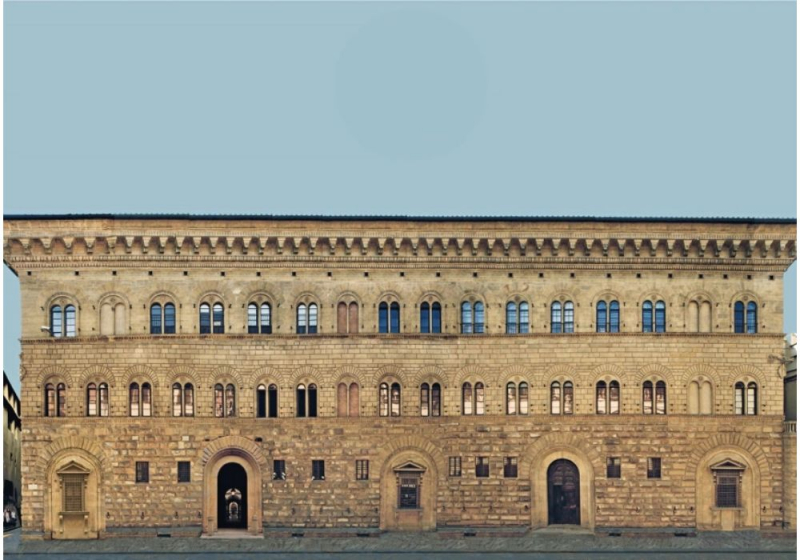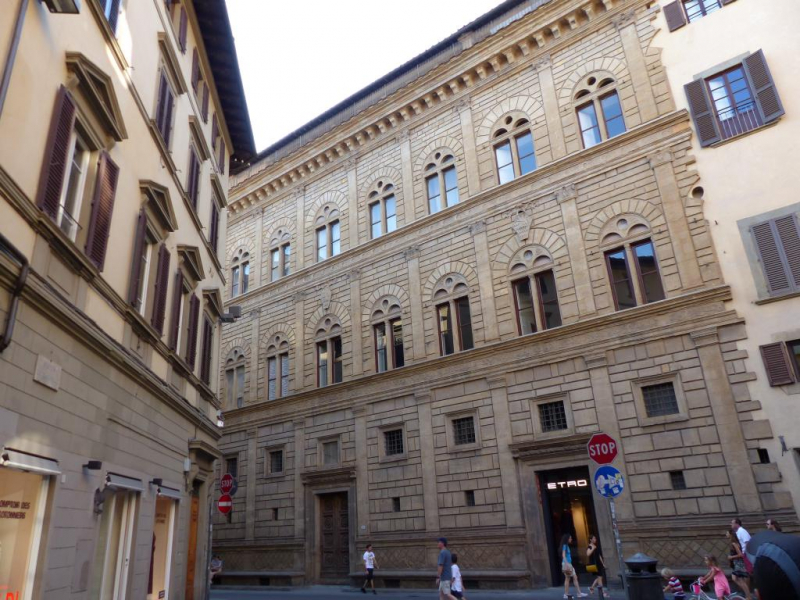Palazzo Rucellai
The great humanist and architect Leon Battista Alberti created the façade of the iconic Renaissance mansion Palazzo Rucellai between 1446 and 1451. This magnificent piece glistens with the authentic humanism of the fifteenth century. The arches, pilasters, and entablatures imitate the architectural features of classical Rome; same motifs are repeated in the bigger blocks on the ground floor, heightening the sense of power and solidity. One of the first examples of the new principles of Renaissance architecture based on the use of pilasters and entablatures in proportion to one another was found in the spectacular front of this building.
An enclave of eight smaller structures that were integrated to form a single architectural complex and positioned around a central courtyard were used to create the palace. The Institute is located on the piano nobile (or noble floor). In 1740, it underwent renovations in honor of Teresa de' Pazzi and Giuseppe Rucellai's nuptials. The well maintained frescoed vaulted ceilings feature patterns and legendary characters.
The Rucellai Palace illustrates the effects of the Renaissance's originality-filled resurrection of antiquity. The facade's grid-like appearance, which was produced by using a trabeated articulation scheme, conveys a rational humanist clarity.
Location: Florence, Italy
Time: 1446- 1451













